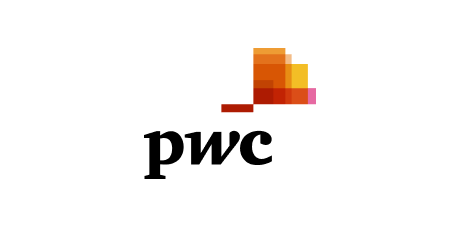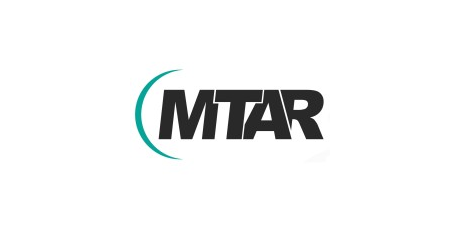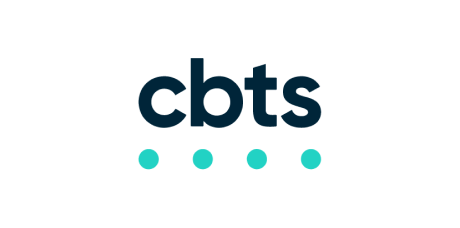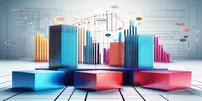Introduction
Raw data is only as powerful as the story it tells. Data visualization bridges the gap between numbers and knowledge by converting complex datasets into visuals that are easy to understand and act on. From real-time dashboards to interactive charts, businesses can spot trends, monitor performance, and make smarter decisions with clarity and speed.
As the volume of data continues to grow, organizations need more than just tools. They need strategic partners who can design visualizations that align with their goals, integrate seamlessly with their systems, and adapt as their data landscape evolves. Data visualization services and consulting provide that edge, combining technical expertise with design thinking to transform scattered information into strategic insight.
What Are Data Visualization Services & Why Do You Need Them?
Data visualization services are specialized solutions that help transform raw data into visual formats such as charts, graphs, dashboards, infographics, and heatmaps. These visual elements simplify the interpretation of data, making it easier for decision-makers to identify trends, outliers, and correlations at a glance. Whether the goal is internal analysis or external reporting, well-designed visualizations ensure your data tells a clear and compelling story.
Visualization services go far beyond simple chart generation. They involve a combination of data analysis, design thinking, and tool expertise to deliver custom solutions tailored to specific business needs. From real-time interactive dashboards that track KPIs to infographics that simplify complex survey data for stakeholders, the scope of services is broad and impactful.
Types of visualizations commonly offered include:
- Dashboards: Real-time data summaries for quick decision-making
- Infographics: Engaging visuals used for reporting or presentations
- Charts and Graphs: Bar, line, pie, scatter plots, and more for trend analysis
- Heatmaps: Color-coded visuals to highlight patterns or anomalies
- Geospatial Maps: Location-based data for logistics, retail, and planning
- Custom Interactive Visuals: Tailored experiences for deeper exploration
Use Cases Across Industries
- Healthcare: Track patient outcomes, visualize clinical trials, manage hospital performance
- Finance: Monitor market trends, detect fraud, analyze investment portfolios
- Marketing: Visualize campaign performance, customer segmentation, lead funnels
- Manufacturing: Monitor production lines, equipment efficiency, and supply chain logistics
In short, data visualization services turn overwhelming data into meaningful action. Whether you’re presenting to a boardroom or optimizing operations on the floor, these services make sure your insights are seen, understood, and used effectively.
Data Visualization Consulting in Business Strategy
In a competitive and data-saturated world, the ability to turn data into decisions defines success. This is where data visualization consulting becomes a strategic asset. Rather than simply generating visuals, consultants take a holistic approach by aligning data visualization with business goals, key metrics, and operational workflows.
How Consultants Drive Data-Driven Decision Making
Data visualization consultants bring more than just technical skills. They understand how to extract relevant insights from large datasets, identify opportunities for growth or efficiency, and present these insights in a way that decision-makers can easily interpret. From C-suite executives to frontline managers, the right visual tools can empower every level of your organization.
Strategic Benefits of Data Visualization Consulting
1. Performance Tracking
Consultants help design real-time dashboards that consolidate key performance indicators (KPIs) from multiple departments into a single, intuitive interface. This gives leadership teams a unified view of business health, allowing them to monitor operations, track goals, and respond quickly to emerging trends
2. Forecasting
Advanced data visualization tools, especially those integrated with AI and predictive analytics, allow businesses to anticipate future outcomes based on historical patterns. Consultants assist in setting up models that display future projections in a clear and visual manner.
3. Risk Mitigation
Consultants can identify potential vulnerabilities by designing visual tools that highlight anomalies, sudden shifts, or compliance red flags. These dashboards act as early warning systems, alerting stakeholders to take corrective action before a minor issue escalates into a larger problem.
4. Stakeholder Communication
Data visualization consultants excel at creating visuals that communicate insights effectively to both technical and non-technical audiences. With clear, concise, and aesthetically pleasing reports and dashboards, stakeholders such as board members, department heads, and team leads can quickly grasp the story behind the numbers.
Custom Solutions vs. Out-of-the-Box Tools
| Feature | Custom Visualization Solutions | Out-of-the-Box Visualization Tools |
|---|---|---|
| Tailored to Business Goals | Built specifically around your objectives and workflows | Offers general features for common use cases |
| Scalability | Easily scalable as your data grows or evolves | Limited flexibility for growing or complex datasets |
| Integration | Deep integration with internal systems and unique data sources | May face compatibility issues with legacy systems |
| Design & Branding | Fully customizable look and feel aligned with brand identity | Limited customization options |
| Cost & Time | Higher upfront investment and longer setup time | Faster implementation with lower initial costs |
| Maintenance | Requires ongoing support from development or IT teams | Managed and supported by the vendor |
Choosing between custom solutions and off-the-shelf tools depends on your organization’s complexity, scale, and long-term goals. A skilled data visualization consultant can help you navigate this decision, ensuring your investment not only meets current needs but also supports future growth.
AI-Powered Data Visualization: The Future is Smart
How AI Enhances Data Visualization
AI brings intelligence to visual analytics by automating and enriching the way data is processed, interpreted, and presented. Here are key ways it transforms the visualization landscape:
- Predictive Analytics: AI algorithms can analyze historical data patterns and forecast future outcomes. When embedded into dashboards, these predictive models help businesses make proactive decisions. For example, a retail company can visualize upcoming demand for specific products, helping them optimize inventory before peak seasons.
- Auto-Generated Insights: Instead of manually searching for trends, AI can surface key insights automatically. It identifies anomalies, correlations, and patterns that might otherwise go unnoticed. This reduces the time analysts spend digging through data and increases the chances of uncovering valuable information.
- Natural Language Processing (NLP) Dashboards: NLP enables users to interact with data using everyday language. With tools like Power BI’s Q&A feature, users can type questions such as “What were the top-selling products last quarter?” and receive visual answers instantly. This empowers even non-technical team members to access insights on demand.
Tools That Combine AI with Data Visualization
Modern data visualization tools now come with built-in AI features that help users go beyond basic charts and graphs. These platforms make it easier to understand data, detect trends, and take action faster using machine learning and automation. Here are some useful tools that combine AI with data visualization.
- Power BI (Microsoft): Power BI allows users to ask questions in plain language and get visual answers. It also includes quick insights, anomaly detection, and integration with Azure Machine Learning for deeper analysis.
- Tableau (Salesforce): Tableau offers AI-driven features through Einstein Discovery. It can explain why certain trends are happening and even suggest what actions to take next based on the data.
- Looker (Google Cloud): Looker connects with Google BigQuery ML to bring predictive models into dashboards. This helps teams monitor key metrics and use forecasts directly inside their visual reports.
- Qlik Sense: Qlik’s Insight Advisor uses AI to suggest the right visualizations, highlight important values, and uncover hidden patterns. It helps users build dashboards quickly with smart recommendations.
Incorporating AI into your data visualization strategy doesn’t just enhance your dashboards. It transforms the way your organization thinks about and uses data, making every decision more informed, faster, and smarter.
Conclusion
Turning raw data into meaningful insight is not always easy. Teams often struggle with scattered reports, inconsistent visuals, and the lack of a clear narrative. This can slow down decision-making and create confusion across departments.
Data visualization services and consulting offer a practical way to bring clarity to your data. With the right approach, your organization can uncover trends faster, communicate more effectively, and make decisions with greater confidence.
If you’re looking to make better use of the data you already have, exploring the right visualization strategy could be a good place to begin. Feel free to reach out to WeThinkApp to learn how we can support your goals.
FAQ
What is the difference between data visualization services and tools like Excel or Power BI?
While tools like Excel and Power BI offer basic visualization features, data visualization services go a step further by combining technical expertise, design thinking, and business strategy. These services create custom solutions aligned with your goals, integrate with existing systems, and provide deeper insights that off-the-shelf tools alone may not deliver.
How can data visualization consulting improve our business performance?
Data visualization consultants help you make sense of your data by building dashboards, reports, and interactive visuals that track KPIs, forecast trends, and identify risks. By tailoring solutions to your unique business workflows, they enable faster, smarter decision-making across all levels of the organization.
Why should we consider AI-powered data visualization for our company?
AI-powered data visualization offers more than just charts. It uses machine learning and automation to detect patterns, generate insights, and even forecast outcomes. This means you can uncover valuable information faster, adapt to changes in real time, and empower your team to make informed decisions without needing deep technical skills.







